Combat aircraft. I am not Boston, I am Ravager!
Continuing the Douglas airplane theme. Today we go further and we have the A-20, which seems to be a continuation of the DB-7, but as a bomber. Although it is called with the letter "A", which means that he is a stormtrooper.
Yes, the plane was supposed to replace the old Northrop A-17A attack aircraft, but something went wrong. The winner of the attack aircraft competition was adopted as a light bomber.
By the way, the second finalist of the competition had about the same fate. This is an aircraft from the North American company NA-40, which turned out to be larger in size and weight category, as one of the attack aircraft ended up in the camp of medium bombers, was adopted and fought the entire war. We know him as B-25. These are the collisions ...
But the A-20 and A-20A ceased to be considered attack aircraft and were assigned to the camp of light bombers. But for some reason they did not rename. Either for reasons of camouflage and disorientation of the enemy, or it was simply laziness.
At first, the military department did not indulge the Douglas with large orders, but in October 1940 a miracle happened: for the army aviation signed a huge contract for the supply of 999 A-20B bombers and 1489 0-53 reconnaissance aircraft.
Aircraft 0-53 is still the same A-20, the difference was in the presence of additional photographic equipment. Not a single 0-53 was built.
But the A-20 and its first modification, the A-20A, went into production at the end of autumn 1940. The A-20A began to be produced even earlier, since the model was closer in design to the already manufactured export DB-7.
A-20A was equipped with R-2600-3 motors. The armament consisted of nine 7,62-mm machine guns: four fixed course guns in the nose, two on top in the rear cockpit, one in the same place below in the hatch and two fixed in the engine nacelles.
Naturally, the machine guns were from "Browning", unlike the British "Vickers" had a belt feed, but the belt of the American machine gun fit into the box under the barrel and was not very long, so the boxes had to be changed. Not as often as UK short shops, but nonetheless.
The aircraft could carry high-explosive, fragmentation and chemical bombs of various calibers. The largest was a bomb at 1100 pounds (480 kg), when it was placed in the bomb bay, the compartment ended and something could only be hung on external holders.
Machine guns in engine nacelles were not always installed, and sometimes they were dismantled in parts, since the value of machine guns firing just somewhere behind the car was very doubtful.
In general, the A-20 did not differ very much from the DB-7 in the British and French contracts, but nevertheless, it was considered that the aircraft was worthy of a different name. And so instead of "Boston" appeared "Havok".
In Britain, this was the name of the night fighter version, and in the United States, all A-20s went as "Havoc".
At the end of 1941, the first A-20s went overseas: they began to staff the 58th squadron in Hawaii. There, at the Hickam airfield, on December 7, 1941, the squadron was hit by a raid by Japanese aircraft that were carrying Pearl Harbor.
The baptism of fire came out so-so: two A-20s burned down on the ground, the rest simply could not take off and demonstrate something like that. And the A-20 returned to combat almost six months later, when it had already gone into the A-20V series.
The 58th then got off easily - only two of her A-20A were burned. But the rest were unable to take off and take part in the search for Japanese ships. From that moment, more than half a head passed before the A-20 continued their combat career in the Pacific Ocean.
The delivery of the last A-20A was completed in September 1941. Further, the A-20V was produced for the American military aviation. It received R-2600-11 engines, glazing like the DB-7A and horizontal bombs in the bomb bay instead of vertical.
Initially, the A-20V was designed with an unprecedentedly powerful defensive weaponry:
three remotely controlled turrets, above and below the gunner's cockpit and in the bow. Each carried two Browning 7,62 mm.
The turrets were considered not very reliable and heavy, and therefore the armament was revised towards simplification and strengthening at the same time. So two 12,7 mm machine guns were installed in the nose, and the same was placed in the upper position of the shooter. The food was a short ribbon from the box, as before. A 7,62 mm machine gun was left in the lower hatch. On some of the vehicles, machine guns were left in the nacelles, firing backwards.
A total of 999 machines of the A-20V modification were manufactured.
But in general, the Americans had a quite good plan: to average and unify as much as possible one model that can be driven in huge quantities for everyone. The American and British Air Forces ordered more and more aircraft that burned in the flames of war, so that was the real point.
This is how the A-20C modification appeared, which was maximally unified with the DB-7B.
The motors were from the "Wright" R-2600-23 with a capacity of 1600 hp. The navigator's cockpit was made as on the A-20A. Seven machine guns remained (again four in the nose, two on the turrets on top of the shooter and one in the hatch below) with a caliber of 7,62 mm. The machine guns were removed from the nacelles, as they were convinced of their complete ineffectiveness.
The armor protection was improved and tank protection was introduced. The fuel supply was increased to 2044 liters.
Most of the A-20C was exported. The first 200 planes went to the UK. There the bombers became Bostons 111 and 111A.
Another 55 A-20S were sent to Iraq for transfer to the Soviet Union. But Churchill persuaded Stalin to swap these machines for Spitfire fighters, which ended up in the air defense of Moscow. And the A-20C was added to the British squadrons in Egypt.
It was on the basis of the A-20S that an experiment was carried out to convert a bomber into a torpedo bomber. 56 aircraft were equipped with external mounts, on which a torpedo weighing 2000 lbs / 908 kg was suspended.
In general, by modernizing the A-20 and unifying the Havok with the Boston of previous releases, the Americans first of all made life easier for themselves. In the Pacific, battles unfolded in which aircraft began to burn. And whoever was able to replenish the losses faster would definitely have an advantage.
And further modernization of the A-20, oddly enough, returned the plane from bombers to attack aircraft. Moreover, in very heavy attack aircraft. And in order to work more efficiently on unarmored or lightly armored targets, work began to strengthen offensive weapons.
This is how the A-20G turned out, a pure attack aircraft. The navigator was removed, at his expense, the booking was increased, and in the nose they marked just an eerie battery of four M1 cannons (This is the famous Hispano-Suiza 404, the release of which was set up by the Bendix Aviation Corporation) and two 12,7 mm Browning machine guns ".
The nose section had to be lengthened, because all this luxury did not fit. The guns had 60 rounds of ammunition and 400 rounds of machine guns. In general, there was something to shoot.
Booking is a separate topic. If you look by our standards of that time, then in comparison with the Soviet Il-2 attack aircraft, the A-20 was very weakly armored. If you look at the German planes, it was not booked at all.
The armor mainly consisted of 10 or 12 mm plates, which were made of aluminum alloy and at the same time these plates served as partitions and bulkheads. Steel sheets of the same thickness covered the pilot (head and shoulders) and the gunner-radio operator from below. Both the pilot and the gunner had bulletproof glass. Machine guns and ammunition boxes at the radio operator's gunner were covered with steel plates.
The shooter's armament remained at the same level: Colt Browning 12,7 mm with 550 rounds for up and back firing and Browning 7,62 mm with 700 rounds for down and back.
Instead of bombs, four fuel tanks, 644 liters each, were suspended. The flight range has more than doubled with them.
The plane gained a lot in weight (it became heavier by almost a ton), naturally, the speed decreased and maneuverability deteriorated. But the cannons in the nose shifted the center of the aircraft forward, which had a positive effect on the stability of the aircraft.
But the second salvo was 6,91 kg / sec. There were few aircraft at that time that could do this. In the Soviet Union, there were no such aircraft until the moment when the first batch of A-20G-1 of 250 aircraft in full force was sent to the USSR.
The plane caused two feelings: on the one hand, it was very far from the IL-2's survivability. On the other hand, he could smash it in full from his trunks.
But the American pilots didn’t get the guns. And starting with the fifth series, six large-caliber machine guns with 350 rounds of ammunition per barrel began to be installed in the nose. The 7,62 mm machine gun at the lowest point was also replaced with a 12,7 mm one. This generally had a positive effect on supply issues: one type of ammunition instead of three. Considering that the Pacific Ocean, where the United States was at war with Japan, was huge, such a turn had a very positive effect.
But instead of the gunner's upper machine gun (by that time he had ceased to be a radio operator, thanks to the Motorola company) they installed an electric turret "Martin" 250E with two 12,7 mm machine guns. The rate of fire has doubled. There was no need to suffer with the change of boxes, there was a continuous ribbon coming from a large box, which turned along with the turret.
In general, the electric turret turned out to be a very pleasant experience. The motors rotated the turret 360 degrees at a speed previously inaccessible. And the shooter's visibility improved significantly, and even did not blow into the turret as well as when the turret was open. There were many pluses, only one minus - the weight of the installation. I had to strengthen the glider.
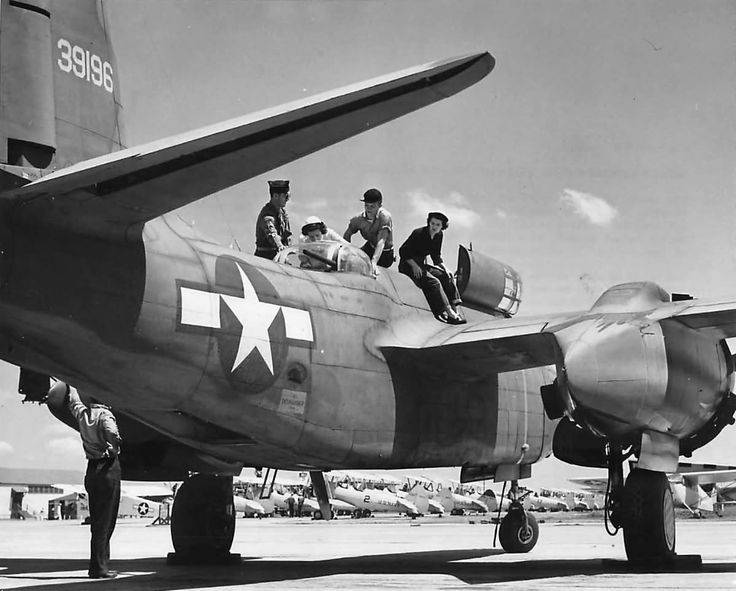
But the strengthening of the airframe made it possible to increase the bomb load. It turned out to slightly increase the rear bomb bay, and it became possible to hang bombs of 227 kg on the underwing bomb racks. The underwing suspension tanks were abandoned, and instead one ventral tank of 1 liters was introduced.
Thus, from model to model, the A-20 evolved as a combat aircraft. Yes, it was getting heavier, losing speed, becoming clumsy, but as a front-line combat aircraft, it remained very formidable weapons.
The overwhelming majority of the manufactured A-20G, and produced 2 850 pieces, were sent to the USSR. They were being finalized, our Air Force demanded a place for the fourth crew member, the bottom gunner.
The British did not like the A-20G, it did not quite fit into their concept of using such aircraft. A very small number of A-20Gs ended up in the US Air Force and the Marine Corps. But our "bug" came off in full.
Yes, in our documents the plane was listed as A-20Zh, and that is why it became a "bug". Not a bad nickname, to be honest, especially if you remember how Hurricane and Hampden were called.
They supplied us with "Bugs" in two ways: through Iran or Alaska.
For the first time in the sky of the Great Patriotic War, the A-20 appeared in 1943. The plane was naturally NOT used as an attack aircraft, having given this case to the IL-2. Indeed, the very weak armor made it possible to deliver assault strikes only using surprise. At low altitudes, the A-20 turned out to be very vulnerable to German small-caliber air defense precisely because of its large size and weak armor. So the Il-2 took up the ground attack, and the A-20 began to perform other tasks.
And, I must say that in the Red Army Air Force, this aircraft can claim the title of the most universal. Day and night medium bomber. Scout. Heavy fighter. Minelayer. Torpedo bomber. Transport plane.
In general, the Soviet pilots liked the plane. Yes, there were complaints, but they were really insignificant. Technicians swore at the complexity of maintenance and exactingness for gasoline and oil, shooters complained about the strong dispersion of bullets from defensive machine guns, oxygen masks did not like the cold and were clogged with condensation.
But the reliability of the weapon, its quantity, firepower, ease of use both day and night - all this made the A-20 a respected aircraft. In the RKKA Air Force Research Institute, the A-20 was even enrolled in fighter-bombers.
Separately, it was said about the need for a navigator in the crew. There were both handicraft and semi-handicraft alterations.
In the Red Army Air Force "Ravagers" successfully served until the very end of the war. They participated in all major operations of the final period - Belorussian, Jassy-Kishinev, East Prussian, fought in the skies of Poland, Romania, Czechoslovakia, Germany.
Indeed, the A-20Gs devastated everything they could reach. Bombs from the A-20G helped stop the German counteroffensive in Hungary. In that half tanksthat were destroyed from the air, if not a small contribution of the A-20. During the Vienna operation, the 244th Air Division alone destroyed 24 tanks and armored personnel carriers, 13 warehouses, 8 bridges and crossings, 886 vehicles.
In April 1945, the Ravagers appeared in the skies over Berlin. The 221st Air Division helped storm the Seelow Heights. The 57th regiment flew when everyone could not get off the ground for weather reasons. It was the A-20 that was the first to drop bombs on Berlin as part of the assault on the city. It happened on April 22. And on April 23, a squadron of Lieutenant Gadyuchko smashed the bridge over the Spree.
If the documents are to be believed, the Ravagers made their last combat mission on May 13, 1945, enlightening the dull ones from the 8th Army in Austria.
Continuing the theme of evolution, it is worth noting that despite the fact that they bombed from the Havok like from a fighter: from a gentle dive or from a low altitude, there was still a great need for a navigator.
In addition to redesigning the aircraft to accommodate the navigator, we resorted to the tactics of the 30s: the leader of the group was in front, according to whose actions all the aircraft worked. The group bombed almost in one gulp. So-so tactics, but there was simply no other.
And then the A-20J went into production. This model had a navigator's cabin in the bow. The completely transparent nose, the Norden M-15 gyro-stabilized bombsight is a dream, not an airplane. It is clear that there were fewer machine guns, two 12,7 mm on the sides of the cockpit, a turret from "Martin" with two more machine guns and the one that fired downward.
In American aviation, the A-20J was attached to all units armed with the A-20G at the rate of one per link. They were also used independently - as scouts or when performing missions that required very accurate bombing.
In addition to the A-20J, at the end of the war, modifications of the A-20K and A-20N went into action. They differed from the A-20G model by more powerful R-2600-29 engines, boosted to 1850 hp.
However, these models were not produced in such large series, no more than 500 cars. And on the K model, the evolution of the Havok is over.
By the way, the capricious British willingly used the A-20J and A-20K models. 169 A-20Js called Boston IV, and 90 A-20Ks called Boston V were used by the RAF in France and the Mediterranean along with earlier aircraft modifications.
Until 1945, the A-20 continued to be supplied to the USSR. In total, 3066 units were delivered to the USSR under Lend-Lease. A-20 of various modifications.
The Ravagers took an active part in the 1943 air battles in the Kuban.
In 1944, the A-20 in the version of night fighters went into action, thereby adding another page to stories the use of the aircraft in the Red Army Air Force. The aircraft equipped with the Gneiss-2 radar were used as night fighters. They were armed with the 56th air division of long-range fighters.
And in naval aviation, radar aircraft were also very widely used to search for surface ships.
The bottom line can be summed up as follows: American engineers were able to create a magnificent versatile aircraft that could be very useful. But for this he had to fall into "direct hands". As in the case of the Airacobra, these were the hands of Soviet pilots and technicians who were able to take everything from the car and a little more.
LTH modification A-20G-45
Wingspan, m: 18,69
Length, m: 14,63
Height, m: 4,83
Wing area, м2: 43,20
Weight, kg
- empty aircraft: 8 029
- normal takeoff: 11 794
- maximum takeoff: 13 608
Engine: 2 х Wright R-2600-A5B Twin Сyclone х 1600 hp
Maximum speed km / h: 510
Cruising speed, km / h: 390
Maximum range, km: 3 380
Practical range, km: 1 610
Rate of climb, m / min: 407
Practical ceiling, m: 7 230
Crew, prs: 3
Armament:
- six 12,7 mm forward fire machine guns;
- two 12,7 mm machine guns in an electric turret;
- one 12,7 mm machine gun for firing through a hole in the bottom of the fuselage;
- bombs: 910 kg of bombs in the bomb bay and 910 kg in the underwing nodes.
A total of 7 A-478 units of all modifications were produced.
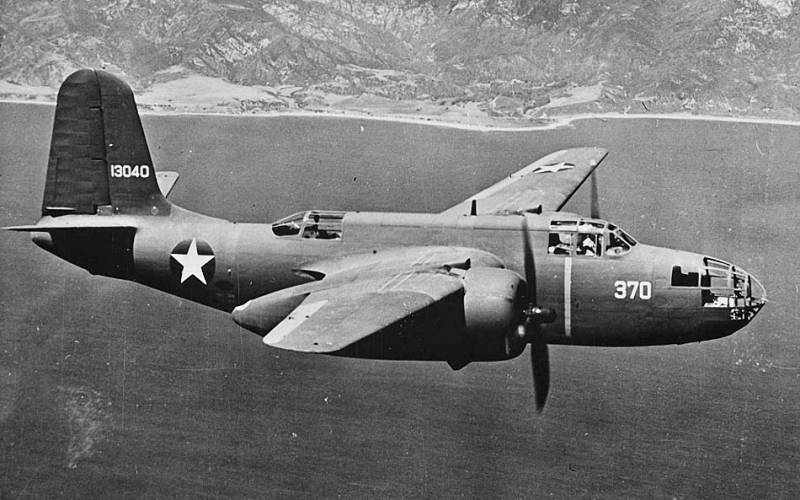
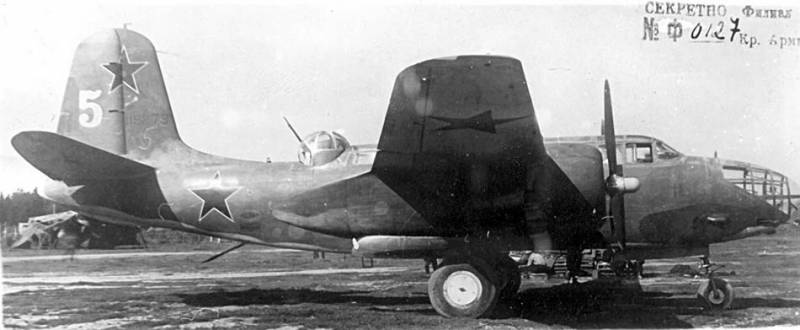
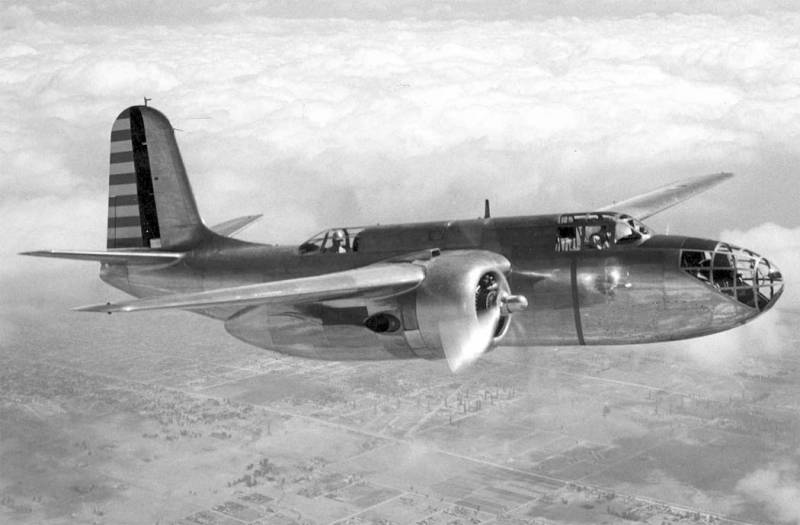
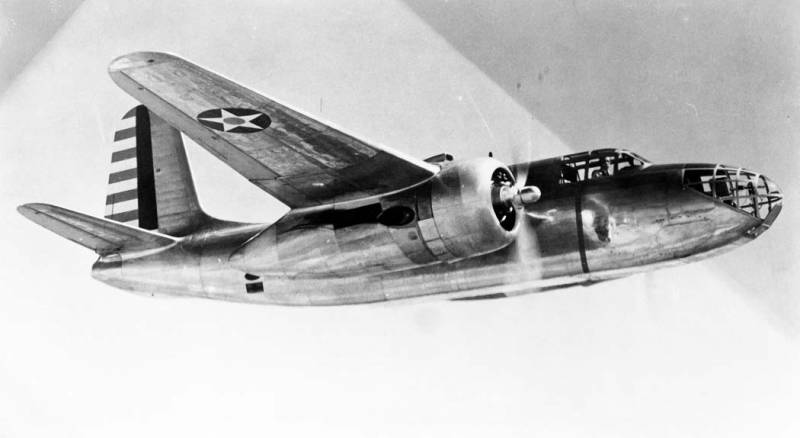
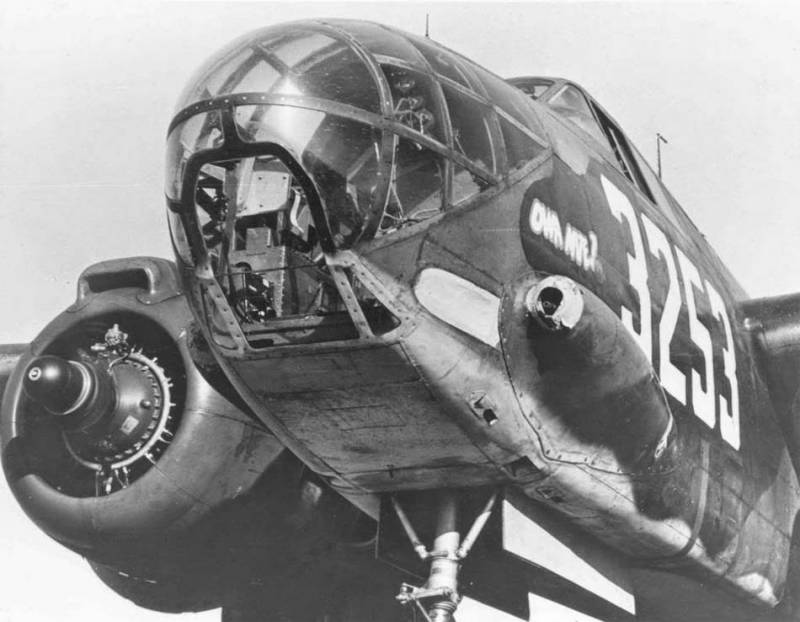
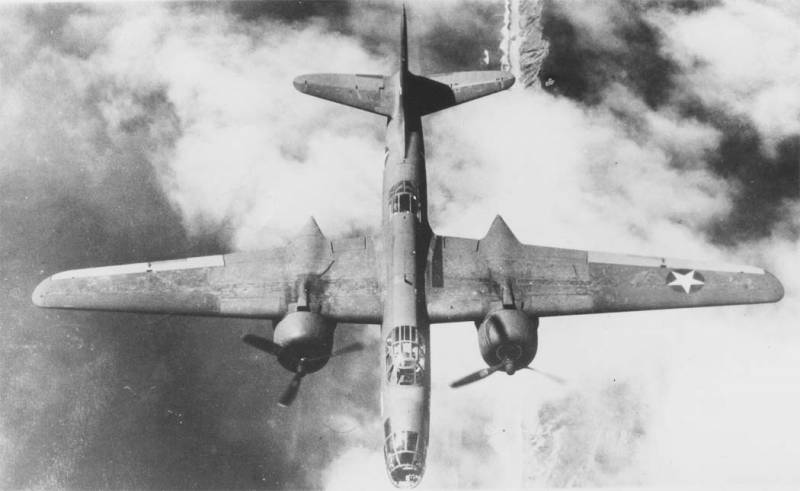
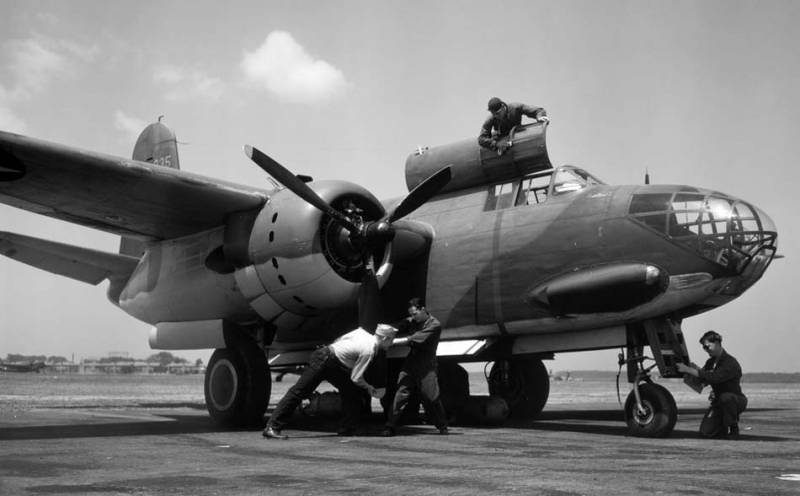
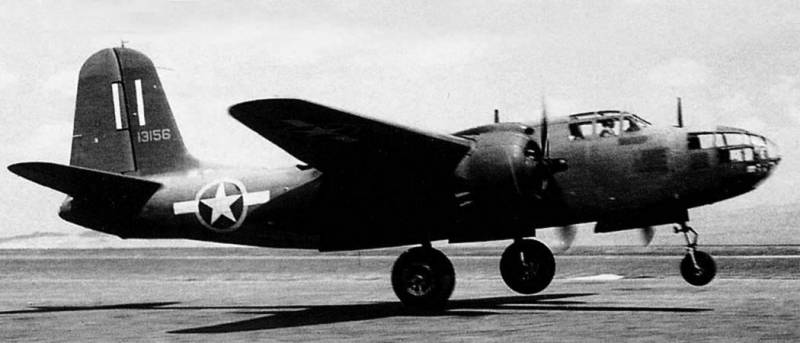
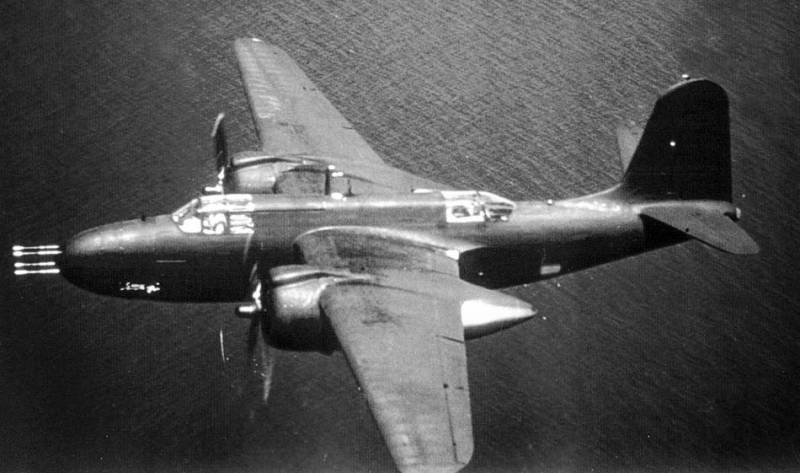
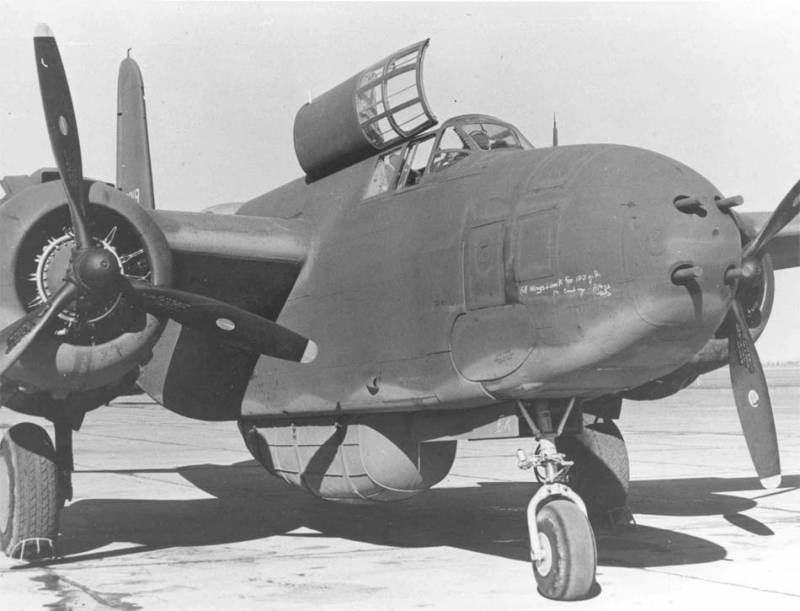
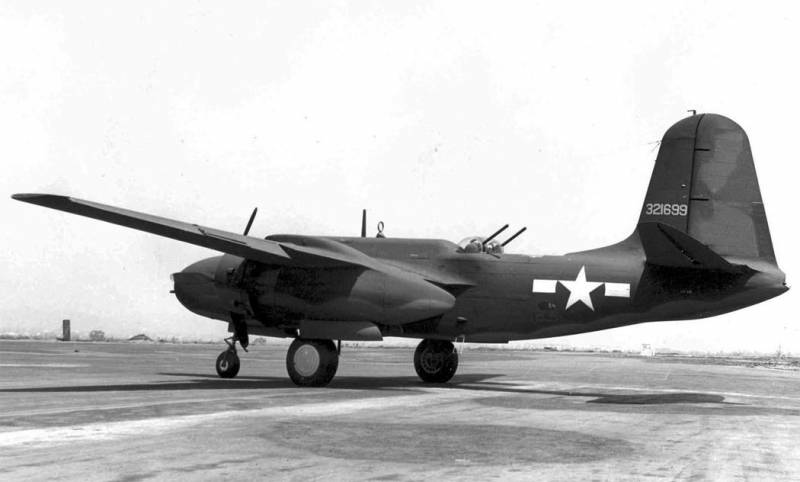
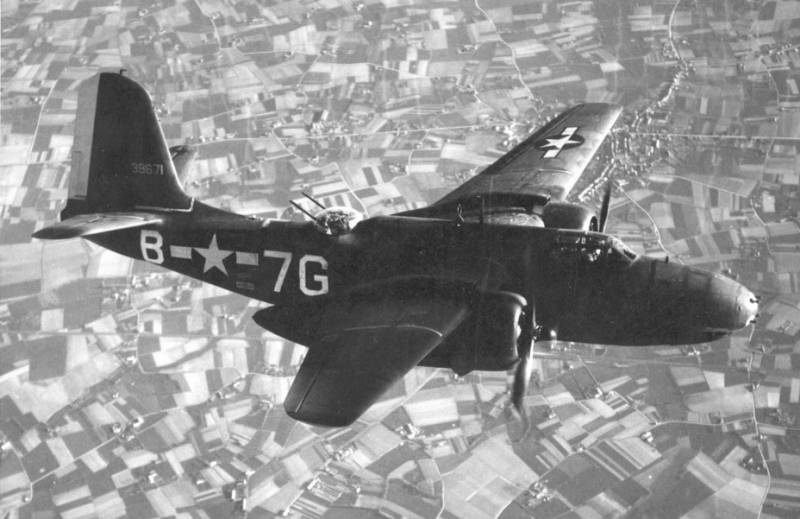
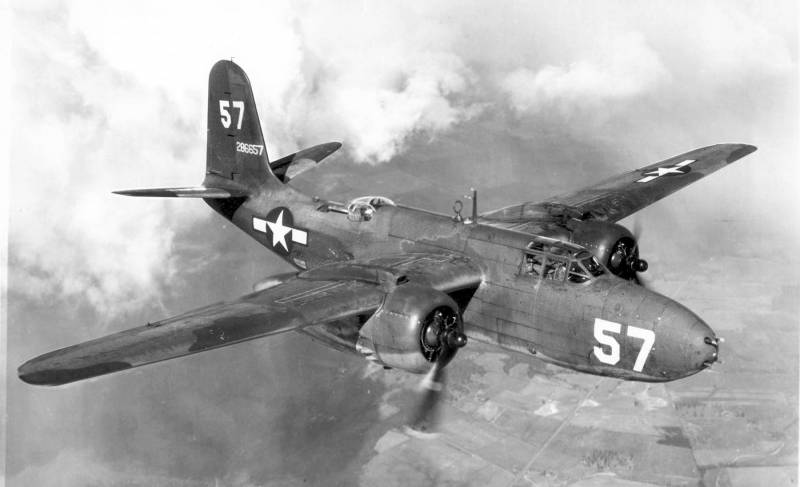
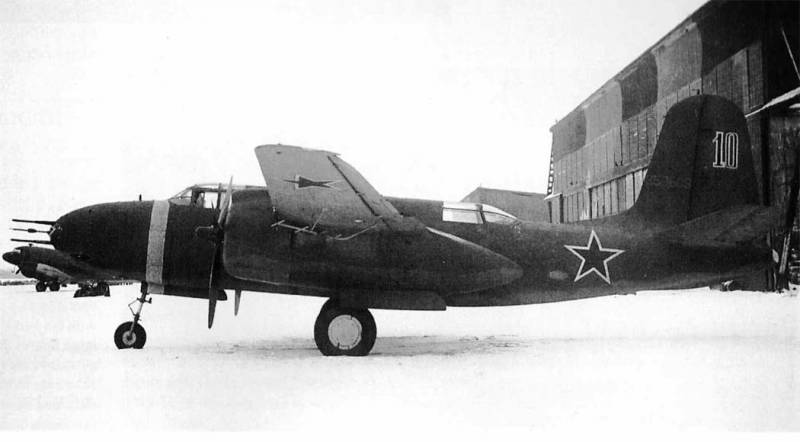
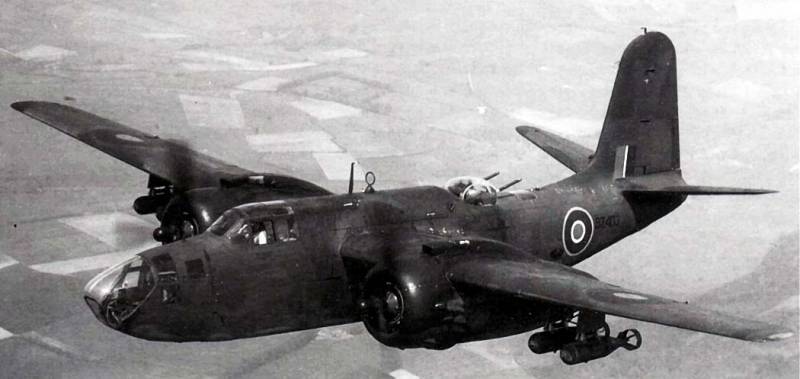
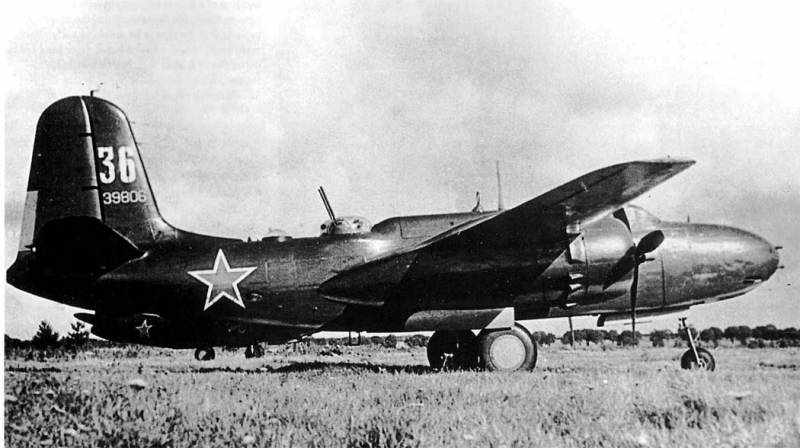
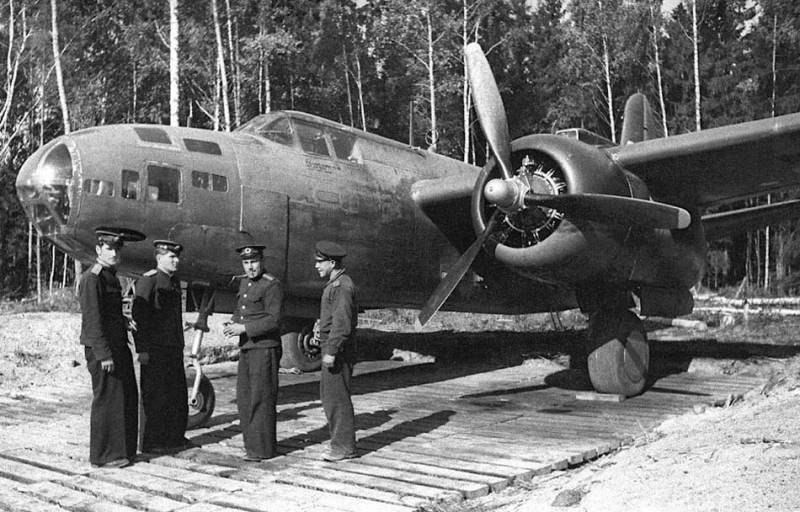
Information